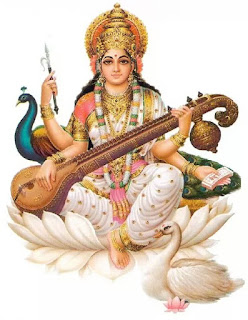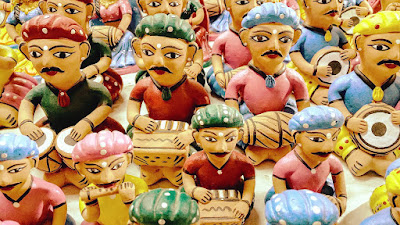Traditional Indian music.
 |
| Harmonium, Indian music instrument. |
The Indian Music and Indian musicians are highly influenced by Bharatmuni's "Natyasastra". This is the first book of Indian aesthetics which discusses primarily the art of dramaturgy - 'Abhinaya', which includes music and dancing also. The " Natyasastra " supplies mostly the technical ideals and details of music and dance.
It does not bring out clearly the separate effects of music and dance. In general, the 'Natya' is meant to afford recreation, and also to educate people,increase their intellectual power and make their lives successful. That is why it can claim to be the "Panchamam Vedam"(the fifth Veda) .
Today Indian music online like YouTube and other Indian music App are available for free download of Indian music in worldwide .
Today Indian music online like YouTube and other Indian music App are available for free download of Indian music in worldwide .
Music have enjoyed a great prestige in India. This is to be witnessed not only from the "Natyasastra" but also from the concepts of deities like Narada, Saraswati Gandharva, Yaksas, etc. Actually , the very birth of music has been found in the religious activity of chantng the Sama-Vedic hymns . The vedic text provided the content and the form suggested itself to these singers as a matter of discovery. They found out that the sound produced from the different parts of the body - the abdomen, lungs, throat and head made a system by itself. The ratios and proportions, which the sound patterns displayed were discovered and the science of ' Srutis' was developed . The musical scales were standardised after certain controversy and laws were framed to regulate the practice of singing. The forms of melodies were further evolved and the system of Ragas was established .
Style of Indian Music
The Indian music, originally devided into DESI and MARGI - witnessed a further change since Amir Khusroo brought a Persian element in it.
A distinct style of singing developed in North India and it is popularly known as the Hindustani style of music.
Till the time of Akbar ,music was mainly a temple art, the means of expressing the devotional feeling for the divine . Akbar patronised the musicians and an institution of court musicians became an social tradition. The great musician Tansen , who is responsible for a number of ' Ragas' in Hindustani music. The devotional element predominant in the Dhrupad style in which the mediaeval musicians of north India specialised was gradually replaced by the romantic element by the time of Mohmadsa Rangile . His court musician Sadarang brought into vogue the'Khayal'style of singing , a further modification in the Hindustani music, which brought a relaxation in the rigidity of the formal aspect of music and also a liveliness and variety in the content. The form of light classical music like 'Thumri', 'Tappa' , 'Gazal' etc., flourished side by side .
The Karnatic style still remains the same both in content and form . The element of devotion is the chief characteristics of the compositions sung by the musicians.
The different Ragas are based on the mathematical proportions among the various musical tones and microtones . Actually, this mathematical relationship among these tones or shrutis is the very ground of the science of music. Music in all parts of the world is a science of harmony, balance and rhythm. The harmony in astronomical spheres is said to have inspired music to Pythogoras .
The importance of abiding strictly by the rules regarding the Ragas which A.K.Coomaraswamy defines as a "melody mould" or "the ground plan of song" is taught to a pupil right from the beginning . As it is known, Indian music can not be learnt from written notes and it has to be heard from the Guru . The Guru imbibes first and foremost the relation of the Shrutis - the various notes and trains the voice to articulate each note clearly . The "melody mould" or the Raga is taught first before the song is taught. In the highest classical form, the ' Alaps ' and ' Tanas '- the free rendering of the ' Swaras ' - assume a great importance and they delineate with maximum clarify and intensity the feeling tone and the basic image of the Raga itself . Here the human voice becomes an instrument by itself and not a means of illustrating a literary text .
India has rich tradition in instrumental music also. Saraswati ,the goddess of learning is always shown with a lute . The flute playing of Krishna is also a well known favourite legend among all Hindus. The "Natyasastra" classifies these instruments into ' Ghana' , ' Susir' , and ' Avanaddha', - percussive, blowing and string instruments respectively . The drum or 'Ghana' instrument was always used along with music to provide a rhythm (tala) to it. The instrumental music also follows the pattern of vocal music. It has to follow the rules controlling the Raga and tala . The most ancient instrument appears to be a string instrument lute , which evolved in the form of Vina later on. It was Amir Khusroo again who modified the lute and invented the Sitar .
Today , the Sitar, Violin, Veena, Sarod, Sarangi, Flute, Shehnai etc., as the major instruments which are used for solo purposes in the music concerts in India. Leaving aside all these particular effects,we can now point out the most fundamental effect of Indian music. With the 'Tanpura' in perfect tune, which provides a sort of drone with its strings to the basic important notes of the melody .
It is not however to be believed that every singer can work out the magic. Art is after all a gift and we may have artists with different intuitive capacities and technical abilities. So the musicians may be having all the requisite conditions to make themselves successful- the imagination, spontaneity, technical skill and a good voice . It is not a coincidence that Tyagaraja and Purandaradasa, Muttuswami Dikshitar, Dandapani Dikshitar, in south India and Jaideva, Swami Haridas , Tansen in north India are remembered by the posterity with all the passionate fervour till date, and there is no doubt that they will continue to be the ideal of Indian music even in future.
Also read....Music career.
Till the time of Akbar ,music was mainly a temple art, the means of expressing the devotional feeling for the divine . Akbar patronised the musicians and an institution of court musicians became an social tradition. The great musician Tansen , who is responsible for a number of ' Ragas' in Hindustani music. The devotional element predominant in the Dhrupad style in which the mediaeval musicians of north India specialised was gradually replaced by the romantic element by the time of Mohmadsa Rangile . His court musician Sadarang brought into vogue the'Khayal'style of singing , a further modification in the Hindustani music, which brought a relaxation in the rigidity of the formal aspect of music and also a liveliness and variety in the content. The form of light classical music like 'Thumri', 'Tappa' , 'Gazal' etc., flourished side by side .
The Karnatic style still remains the same both in content and form . The element of devotion is the chief characteristics of the compositions sung by the musicians.
Principle of Indian music
The Vedic man discovered the potentiality of sound . The system of ''Shruti" is a well planned science and an epitome of rational principles of balance, ratio and proportion . The melodies in the form of Ragas try to combine the notes which bear a relationship of balance and proportion. Every Raga has its own Vadin - the sonant, the samvadin- assonant , the Anuvadin and Vivadin notes. It is these notes which give certain form and nuance to each Raga and also an individuality .The different Ragas are based on the mathematical proportions among the various musical tones and microtones . Actually, this mathematical relationship among these tones or shrutis is the very ground of the science of music. Music in all parts of the world is a science of harmony, balance and rhythm. The harmony in astronomical spheres is said to have inspired music to Pythogoras .
The importance of abiding strictly by the rules regarding the Ragas which A.K.Coomaraswamy defines as a "melody mould" or "the ground plan of song" is taught to a pupil right from the beginning . As it is known, Indian music can not be learnt from written notes and it has to be heard from the Guru . The Guru imbibes first and foremost the relation of the Shrutis - the various notes and trains the voice to articulate each note clearly . The "melody mould" or the Raga is taught first before the song is taught. In the highest classical form, the ' Alaps ' and ' Tanas '- the free rendering of the ' Swaras ' - assume a great importance and they delineate with maximum clarify and intensity the feeling tone and the basic image of the Raga itself . Here the human voice becomes an instrument by itself and not a means of illustrating a literary text .
 |
| The Goddess of Music. |
Today , the Sitar, Violin, Veena, Sarod, Sarangi, Flute, Shehnai etc., as the major instruments which are used for solo purposes in the music concerts in India. Leaving aside all these particular effects,we can now point out the most fundamental effect of Indian music. With the 'Tanpura' in perfect tune, which provides a sort of drone with its strings to the basic important notes of the melody .
It is not however to be believed that every singer can work out the magic. Art is after all a gift and we may have artists with different intuitive capacities and technical abilities. So the musicians may be having all the requisite conditions to make themselves successful- the imagination, spontaneity, technical skill and a good voice . It is not a coincidence that Tyagaraja and Purandaradasa, Muttuswami Dikshitar, Dandapani Dikshitar, in south India and Jaideva, Swami Haridas , Tansen in north India are remembered by the posterity with all the passionate fervour till date, and there is no doubt that they will continue to be the ideal of Indian music even in future.
Also read....Music career.
Follow the Author by Saatchi Art.....LinkedIn..Twitter.
If the article helpfull for you,Please comment and share below.


nice...
ReplyDeletei really liked your blog. interested to know more...
ReplyDeleteThanks
ReplyDelete